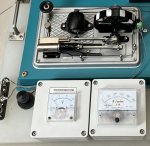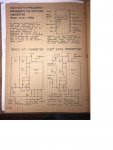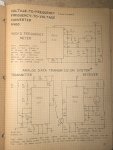john green
Member
I have a project that requires the monitoring and using a data logger to record, among other easier parameters, any change in the speed of ten dc motors over a test period of some weeks.
The motors have encoders but though recording such square waves directly is quick and easy, this does not present a very user friendly solution when it comes to reading or monitoring the speed. A much more appropriate option for a clear and easy to read graphical presentation is to converting the encoder frequency to an analogue voltage.
I realise I can do this with off-the-shelf hardware but I am wondering whether there is an effective PICAXE way of achieving the same effect.
The encoder output is a clean square wave (hall effect switch) and in the order of 80Hz at the correct running speed. The motor speed is 400rpm and it would be preferable to be able to measure this to the nearest couple of rpm - so a resolution of 0.025 volts on a 5 volt range.
Any suggestions please?
The motors have encoders but though recording such square waves directly is quick and easy, this does not present a very user friendly solution when it comes to reading or monitoring the speed. A much more appropriate option for a clear and easy to read graphical presentation is to converting the encoder frequency to an analogue voltage.
I realise I can do this with off-the-shelf hardware but I am wondering whether there is an effective PICAXE way of achieving the same effect.
The encoder output is a clean square wave (hall effect switch) and in the order of 80Hz at the correct running speed. The motor speed is 400rpm and it would be preferable to be able to measure this to the nearest couple of rpm - so a resolution of 0.025 volts on a 5 volt range.
Any suggestions please?



